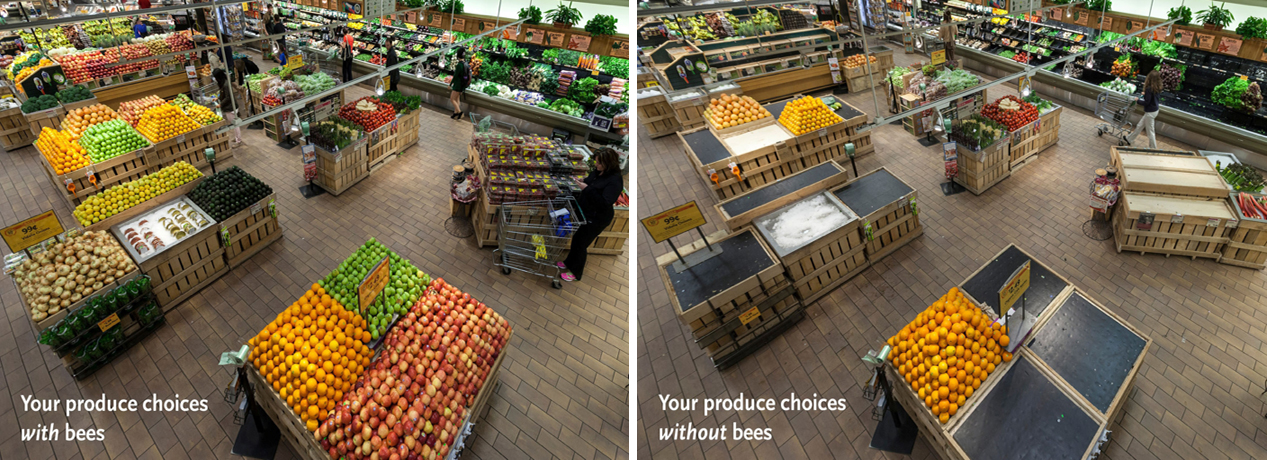A World Without Bees…
Imagine a world without most of the foods you love. Without bees we wouldn’t have the abundance of apples, pumpkins, strawberries, blueberries, or almonds that we enjoy. Of the foods and beverages that we consume daily, over 30% rely on or benefit from a pollinator.1 Pollinators even help milk production: the alfalfa and clover cows graze is replenished by seed pollinated by bees.
Worldwide, production of animal-pollinated crops is valued at over $235 billion annually.2 The loss of pollinators would negatively affect both farmers and consumers who would be faced with reduced crop yields and lower quality products. Moreover, insect-pollinated foods contain many key nutrients, such as vitamin E, essential to our diet.3 A world without pollinators would not only leave us with fewer food choices, but would make it substantially harder to find the nutrition we need to survive.

Who Are the Pollinators?
Crop pollinators include honey bees, native bees, beetles, butterflies, flies, moths and wasps.4-5 Native pollinators are incredibly diverse: for example, there are approximately 3,600 species of native bees in the US alone, and over 20,000 bee species worldwide. Pollinators also maintain a healthy planet by ensuring natural areas are filled with a diversity of plants, maintaining ecosystem function, and facilitating the production of seeds and nuts that support other wildlife.
There are approximately 20,000 species of bees found on every continent except Antarctica, here’s a small sample

Pollinators in Decline
Pollinator populations are in decline in many parts of the world and these declines put agricultural productivity and the health of natural ecosystems at risk. Over the past decade, we have seen a dramatic rise in annual hive losses for the domestic honey bees in the U.S., with beekeepers now losing more than 30% of their bees each year.6 But native pollinators may be fairing even worse. Numerous wild, unmanaged pollinator species native to North America are experiencing declines and a significant proportion of native bee species are at risk of extinction. For example, at least 28% of North America’s bumble bees have undergone significant declines, including species that were formerly common and widespread.7 In 2017, the rusty patched bumble bee, which has disappeared from 87% of its historic range, became the first bumble bee to be listed as an endangered species.8,9
Butterflies in the U.S. have also undergone significant declines: 19% are at risk of extinction, including species with special habitat needs as well as generalist species that were once widespread.10 The iconic monarch butterfly, for example, has experienced declines of 74–80% in populations both east and west of the Rocky Mountains.11,12
Habitat loss, alteration, and fragmentation, as well as diseases, pesticide use and climate change are all threats to pollinators and the ecosystems that they support.
 Photo: Whole Foods Market®
Photo: Whole Foods Market®
How Bee Better Certification Supports Pollinators
Pollinator populations rebound when they are provided with habitat13–16 and protected from other threats. To promote pollinators on farms, The Xerces Society developed a comprehensive set of Production Standards guided by the most recent science and rooted in over a decade of on-farm trials. Bee Better Certified farmers create flower-rich habitat, provide nesting locations, and create a safer environment for pollinators by protecting them from pesticide exposure and the spread of disease from commercially managed bumble bees.
By buying Bee Better Certified products, you can help transform our farmland into a landscape that nourishes pollinator populations, providing vibrant habitats that help pollinators thrive while making agriculture more resilient.
